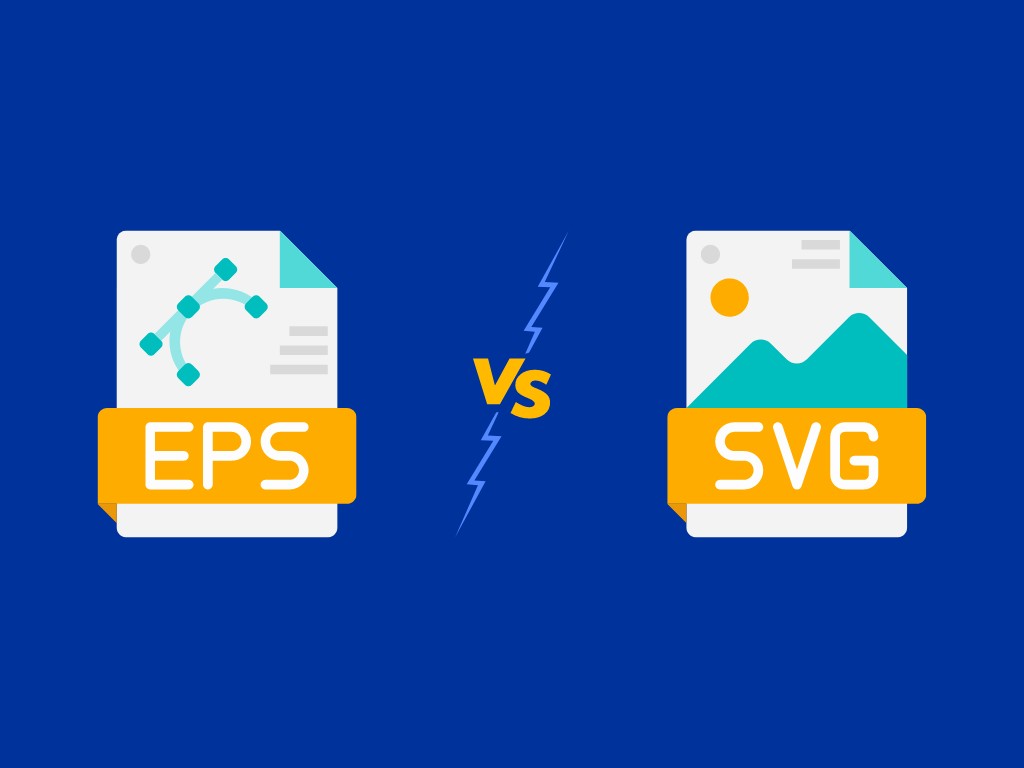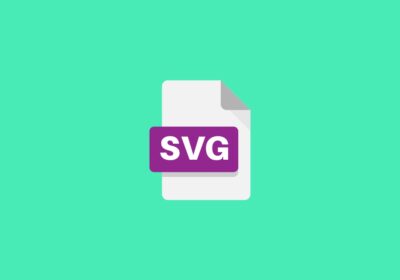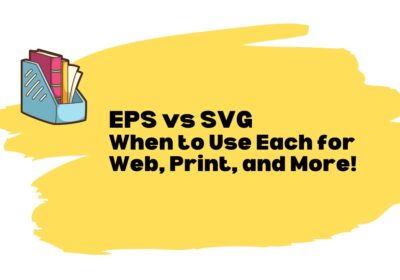
SVG vs EPS: Which Format Should You Use?
Welcome to our blog where we’ll be delving into the debate of SVG vs EPS: Which Format Should You Use? Whether you’re a seasoned crafter using Cricut or a design enthusiast, understanding the differences between these two popular file formats is crucial for creating high-quality, scalable graphics. We’ll explore the characteristics, advantages, and best use cases for each format, providing you with the insights you need to make informed decisions for your projects. So, let’s dive in and unravel the mystery of SVG and EPS!
Understanding the Versatility
SVG’s versatility shines through in its ability to seamlessly adapt to various screen sizes and resolutions without sacrificing quality, making it an ideal choice for responsive web design. Whether it’s logos, icons, illustrations, maps, or other graphical elements, SVG’s scalability and crispness make it a standout option for diverse design needs. The use of vectors in SVG not only enables effortless scaling but also allows for effortless editing of individual elements within the graphic, empowering designers with an unparalleled level of creative control. Furthermore, with SVG, designers can effortlessly integrate intricate visual effects like gradients and filters while still keeping file sizes compact.
Versatility in Print Design
EPS files are highly regarded in the realm of print design, offering versatility and flexibility for a variety of printed materials such as banners, brochures, and packaging. Designers value the format’s support for both raster and vector graphics, allowing for the integration of intricate artwork while maintaining sharpness and clarity in the final printed output. Furthermore, the ability of EPS to preserve intricate details and smooth curves even when scaled up or down is a key factor in ensuring the visual integrity of designs across different sizes, making it a preferred choice for print designers. Additionally, the vector-based nature of EPS enables easy manipulation and customization of elements like typography, logos, and illustrations, further enhancing its appeal in the world of print design.
Compatibility with Adobe Software
EPS offers excellent compatibility with popular Adobe software like Illustrator and InDesign, enabling seamless import and editing of EPS files within the preferred design environment. Designers working with Adobe software benefit from the native support for EPS files, ensuring efficient handling of complex graphics while retaining editability throughout the design process. The seamless integration between EPS files and Adobe tools empowers designers to leverage advanced features for manipulating vector elements, ensuring precision and consistency in print layouts. This compatibility streamlines the workflow for designers, providing a familiar platform for working with EPS files alongside other design assets within their projects.
Scalability and Resolution
When deciding between SVG and EPS formats, it’s important to consider their scalability benefits. SVG images are perfect for logos and icons on websites, as they can be scaled indefinitely without losing quality or clarity. On the other hand, EPS images can also be scaled without loss of quality, ensuring high-resolution output in printed materials like banners and brochures. It’s worth noting that SVG images are displayed at their native resolution on screens, while EPS images require setting the appropriate resolution when exporting for print. Both formats offer scalability advantages, but the intended use case should guide the choice based on the specific requirements of the project.
Browser and Software Compatibility
SVG and EPS formats each have their strengths when it comes to compatibility and integration. For web design, SVG takes the lead, being well-supported by modern browsers and seamlessly adapting to different screen sizes and resolutions. Its easy integration of interactive elements using CSS and JavaScript makes it a preferred choice. On the other hand, EPS files shine in the realm of professional design software, offering unmatched compatibility with industry-standard tools like Adobe Illustrator and CorelDRAW. While not directly supported by web browsers, EPS remains an industry standard in print design due to its robust compatibility with professional software, making it the go-to choice for print projects. Both formats have their place, with each excelling in specific design environments.
Scalable Vector Graphics (SVG)
SVG is a versatile vector image format that offers the convenience of scaling graphics without sacrificing quality, making it perfect for a wide range of design applications. One of its key advantages is the ease with which it can be manipulated using CSS and JavaScript, allowing for the creation of interactive and animated graphics. Additionally, SVG’s XML-based nature allows for easy indexing and searching, which is beneficial for accessibility and SEO purposes. Another benefit of SVG is its support for transparency and animation effects, enabling the development of visually stunning designs for web and digital platforms.
SVG for Web and Digital Design
SVG files present a world of possibilities for web developers. With the ability to be edited using any text editor, developers can directly manipulate the code to customize the visual appearance of graphics and images, allowing for truly customized designs. The format’s support for transparency, gradients, and filters makes it versatile for creating visually stunning web designs with intricate details. Additionally, the scalability of SVG images ensures sharp visuals across different screen sizes and resolutions, making them perfect for responsive web design. Moreover, the use of SVG sprites can significantly improve website loading times by reducing HTTP requests, combining multiple images into a single file for more efficient delivery.
EPS for Print and Illustrator Projects
EPS files are highly preferred in print projects due to their capability to retain image quality and sharpness while being resized for various print sizes. The compatibility of the EPS format with PostScript printers ensures accurate reproduction of colors and intricate details in professional printing processes, making it a top choice for high-quality print materials. Moreover, in Adobe Illustrator, EPS files offer access to advanced editing features like live color adjustments, brush tools, and complex path operations, making them ideal for creating detailed and visually compelling designs. When it comes to branding materials such as business cards and brochures, EPS is favored for its ability to maintain the clarity of logos and graphics at different sizes, ensuring a consistent visual identity across various print materials.
Encapsulated PostScript (EPS)
When it comes to print design, EPS stands out as a versatile file format, offering scalability and high-quality resolution that make it particularly well-suited for logos, illustrations, and graphic elements. Its seamless integration with Adobe software such as Illustrator, Photoshop, and InDesign further enhances its appeal, allowing for effortless editing and compatibility across different design applications. Additionally, the vector nature of EPS files enables easy scaling without any loss of quality, providing flexibility in resizing elements for a variety of print materials such as business cards, flyers, and posters.
Choosing the Right File Format for Your Cricut Projects
When deciding between SVG and EPS formats, it’s essential to evaluate the complexity of your design. SVG is well-suited for intricate designs with many details, making it ideal for projects with elaborate graphics. On the other hand, EPS may be better for simpler graphics that require easy text manipulation due to its advantages in text editing. Additionally, considering the compatibility of the file format with other software is crucial. SVG is a widely supported format for online sharing, while EPS shines in seamless integration with various design applications. These considerations will help you make an informed decision based on your unique design needs.
Optimizing SVG Files for Seamless Cricut Cutting
When preparing SVG files for your Cricut machine, it’s crucial to prioritize vector graphics over raster images to ensure sharp and crisp results. Ensure that all paths are closed properly within your SVG file to avoid any unexpected cut lines during the cutting process. Additionally, grouping similar elements together within the SVG file can optimize cutting efficiency and minimize material waste. Consider simplifying complex shapes into basic geometric forms to enhance cutting accuracy and speed, ensuring precise and efficient results for your projects.
SVG vs EPS, Key Differences
When it comes to choosing between SVG and EPS formats, it’s important to consider the specific requirements of your design project. SVG, a vector-based image format, is perfect for graphics that need to scale without losing quality, making it well-suited for web and digital applications. On the other hand, EPS, another vector-based format, is widely used in print design and illustration, offering support for transparency and effects. While SVG files are smaller in size and ideal for web use, EPS files boast compatibility with a wide range of design software, catering to the needs of print designers. Understanding the strengths of each format allows designers to make informed decisions based on their unique project needs.
Best Use Cases for SVG vs EPS
SVG format offers exceptional versatility in web and digital design, catering to the scalability and compact file size requirements of modern online graphics. This makes it an ideal choice for creating impactful logos, icons, and illustrations for websites. On the other hand, EPS format shines in the realm of print and Illustrator projects, preserving image quality and intricate details without compromise. Its wide compatibility with professional design software like Adobe Illustrator further solidifies its standing as the go-to choice for professional print and graphic design endeavors.
Tips for Optimizing SVG and EPS Files for Cricut Cutting
When working with SVG files, it’s essential to simplify the paths to minimize the file size and enhance cutting precision. On the other hand, for EPS files, it’s crucial to convert all fonts to outlines to uphold consistency across various systems. Additionally, when dealing with SVG files, consider converting text to outlines to prevent font compatibility issues when sharing your designs. And before initiating the cutting process, always double-check the scaling of your design to guarantee a perfect fit on the material. These steps are integral to ensuring seamless and accurate results in your cutting projects.
When deliberating between SVG and EPS formats, it’s crucial to assess the intricacy of your design. SVG is well-suited for elaborate graphics and web usage, while EPS excels in print and Illustrator projects, offering support for transparency and effects. Understanding the unique strengths of each format will empower designers to make informed decisions based on their specific project needs. SVG proves to be a versatile choice for web and digital design, ideal for creating impactful logos and icons, while EPS shines in the realm of professional print and graphic design, preserving image quality without compromise. By optimizing SVG and EPS files for Cricut cutting, designers can ensure seamless and accurate results in their cutting projects, regardless of the chosen format.





Pingback: EPS vs SVG: When to Use Each for Web, Print, and More!